Materials: Maple wood
Cynthia + ocarina = Cyntharina
Made out of scrap maple wood in December of 2019, the Cyntharina is my take at an ocarina. In the instrument's planning stages, I had wanted to improve on the ergonomic shape of the traditional ocarina I grew up with. On family trips and vacation getaways to various tourist locations in China, there would always be cheap porcelain ocarinas being sold at gift shops along with a sheet of possible songs to play. While receiving this as a gift was endearing, they were not always the most comfortable objects to hold while playing. My original plan was to create my interpretation of the ocarina, focusing on improving the general shape.
However, as I progressed the challenge became more of learning and recreating how the ocarina, or any wind instrument, produced sound. After going through multiple rounds of editing the shape, I ended on a small shell-like object. With the sound-making element figured out, I thought I could finally move on from prototyping with clay to working with wood until I tried actually playing the prototype. No sound was coming out and I started to panic. After a moment, I began troubleshooting and, in a split moment, decided to peel back the bottom of the shell to figure out if the problem was the sound-making element or the size of the shape itself. I peeled the bottom of the shell and blew into the mouthpiece; relief ran through me as music played. As I further opened the bottom the notes went higher, and when I closed the notes ran lower.
When people ask me how I came up with this idea, that's how quickly and accidentally it happened. The process of troubleshooting led to the creation of this first iteration of the Cyntharina.
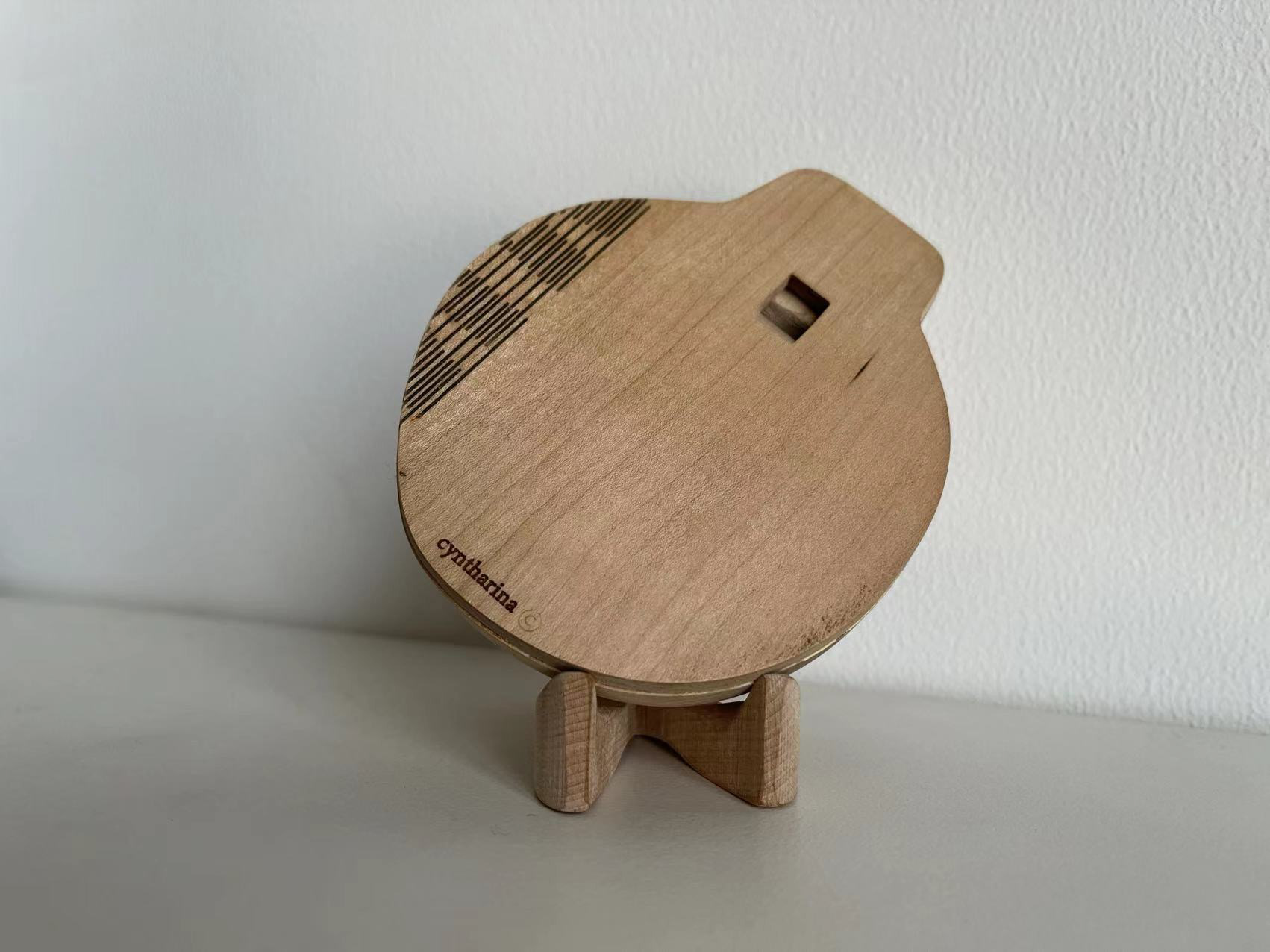
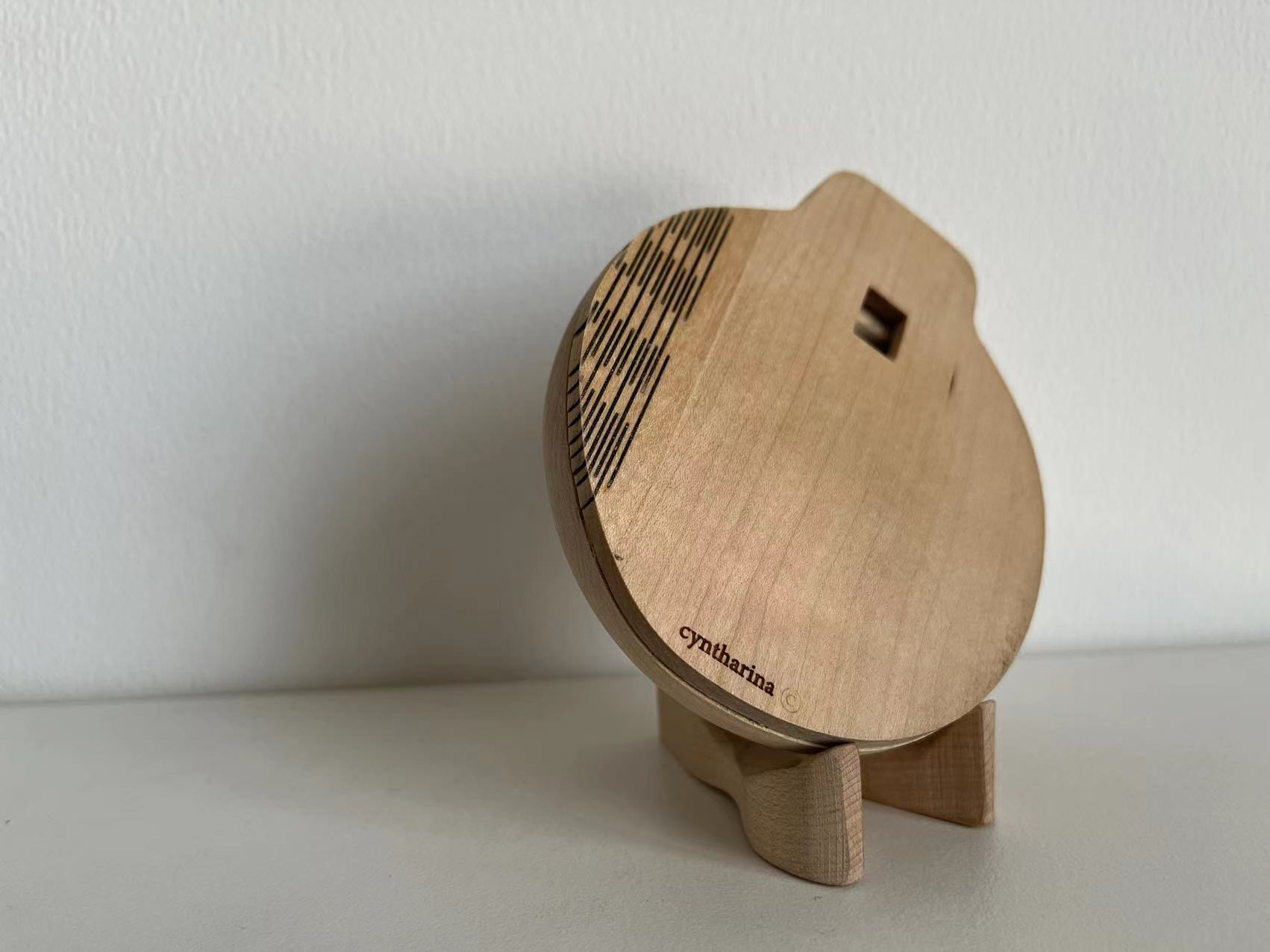
Process and Prototype Display
Below is a full display of all prototyping and experimentation my instrument went through before I landed on the final iteration. The clay shell object on the far right is the one spoken about when I was troubleshooting. In order to figure out how I was going to peel wood, however, below are all laser-cut bendable wood experimentation. Various patterns and widths were tested before I settled on the current solution.
Woodworking Process
Through a tedious and lengthy process, I chiseled away at the inside of the shell and smoothed the bowl with sandpaper. With the help of the Band Saw and sanding machine, the shell was finished.
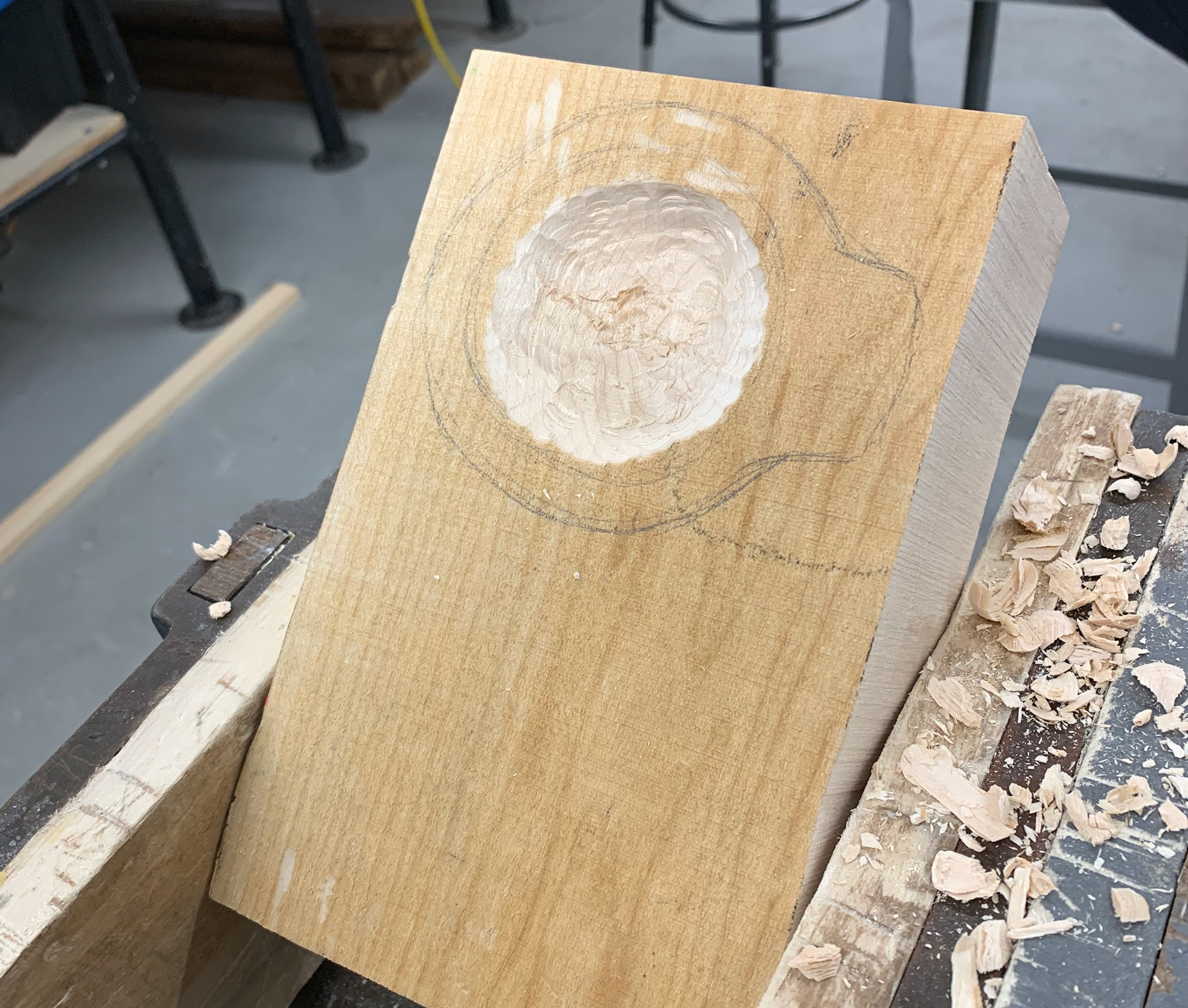
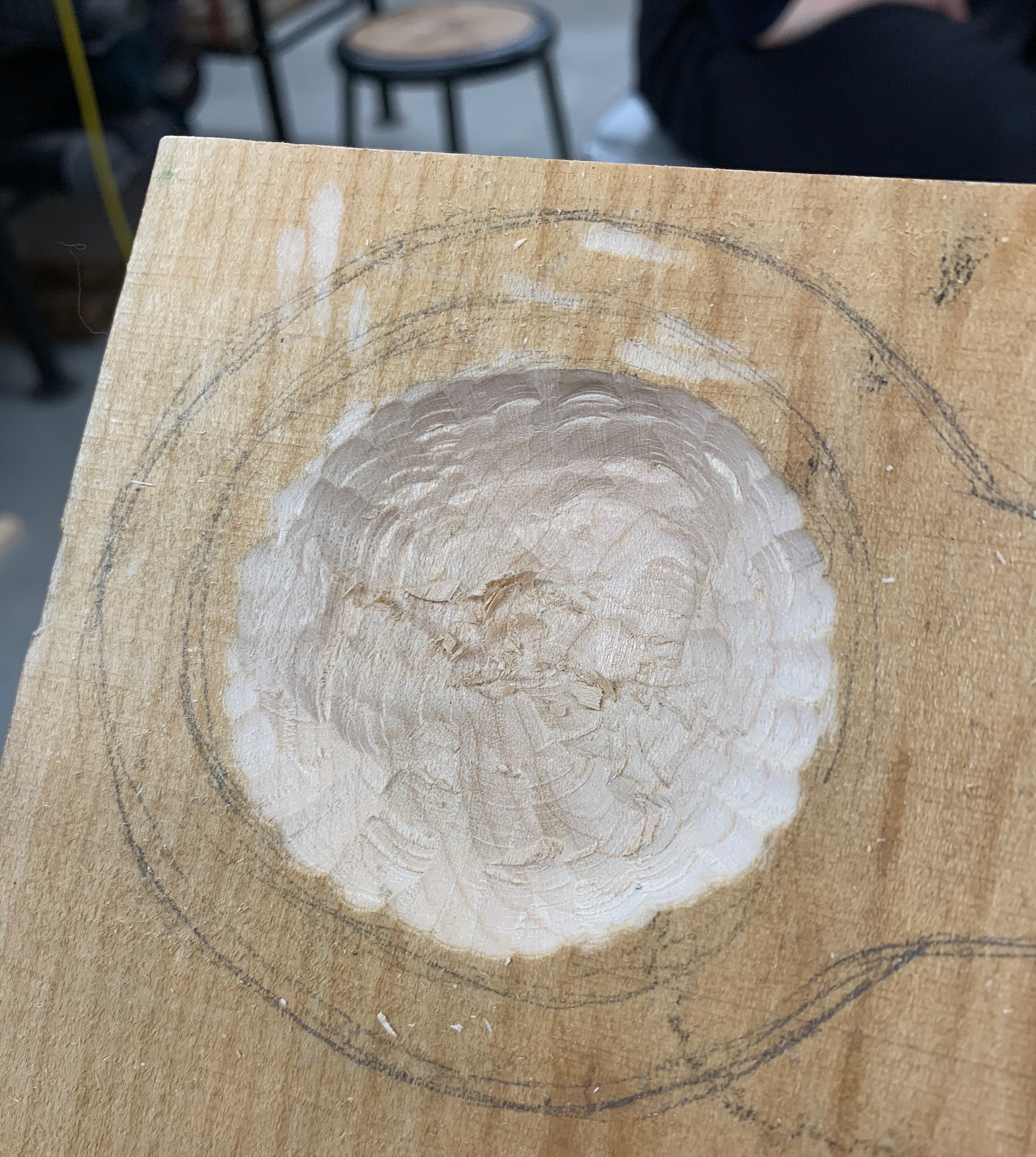
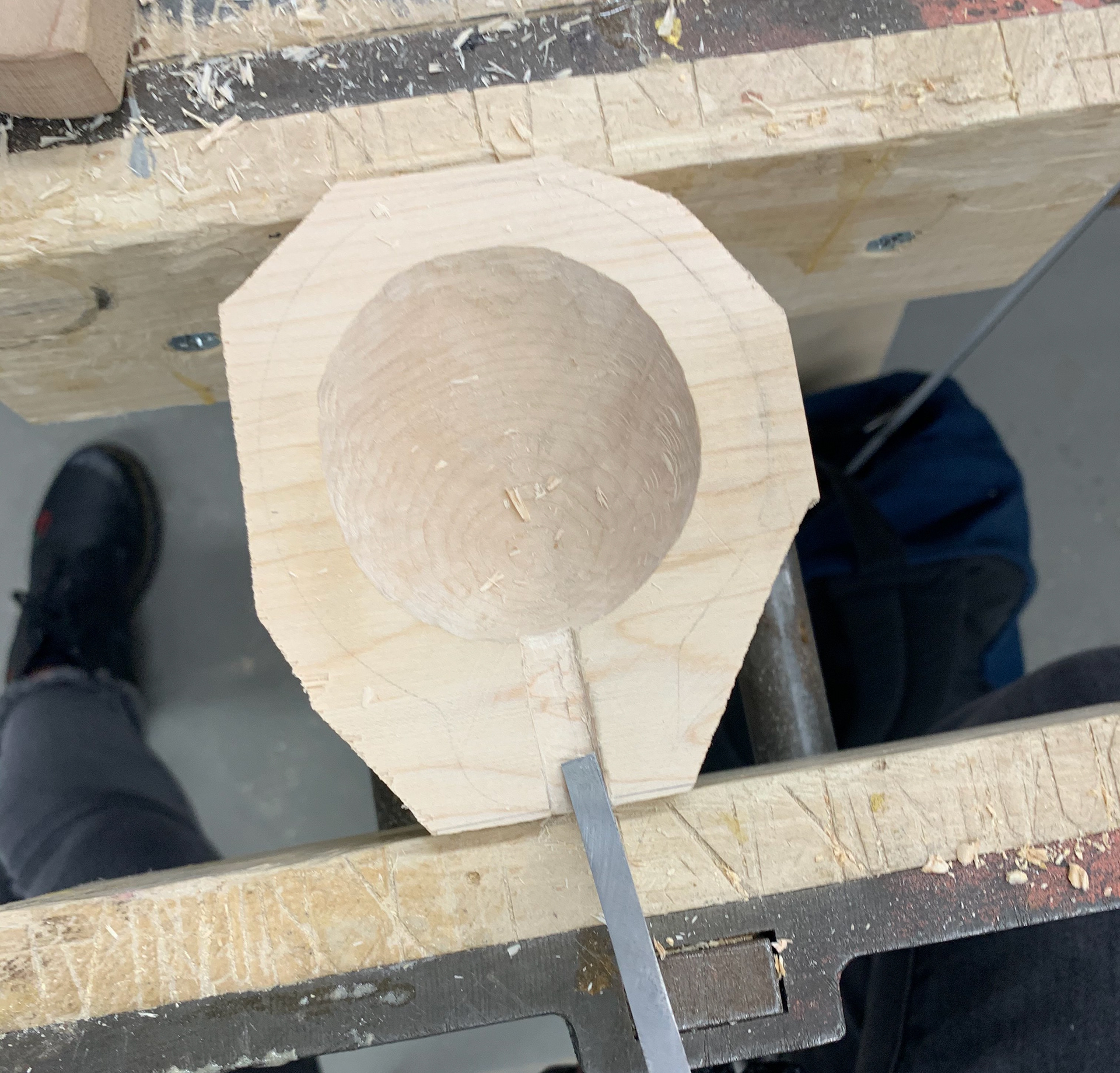
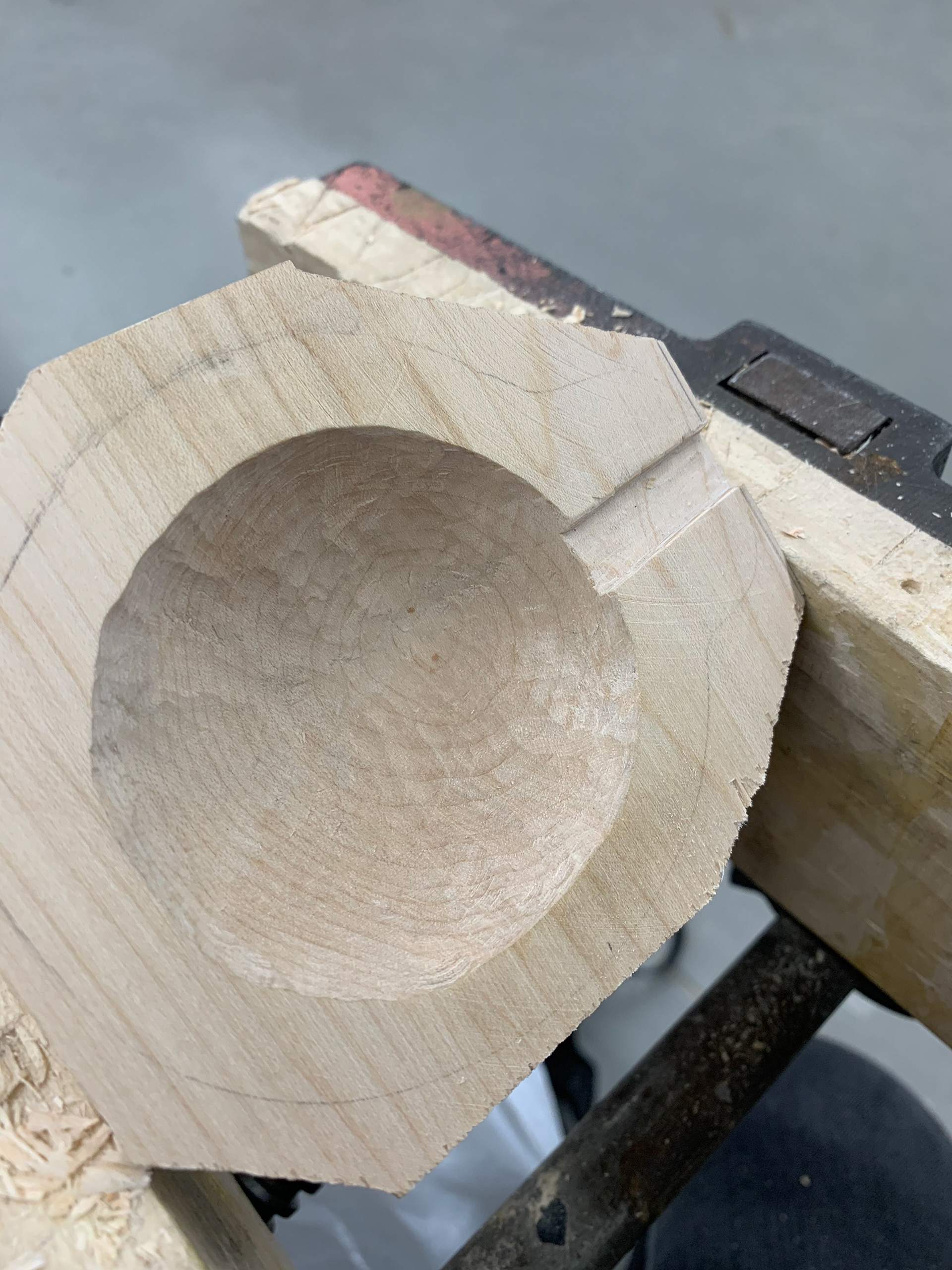
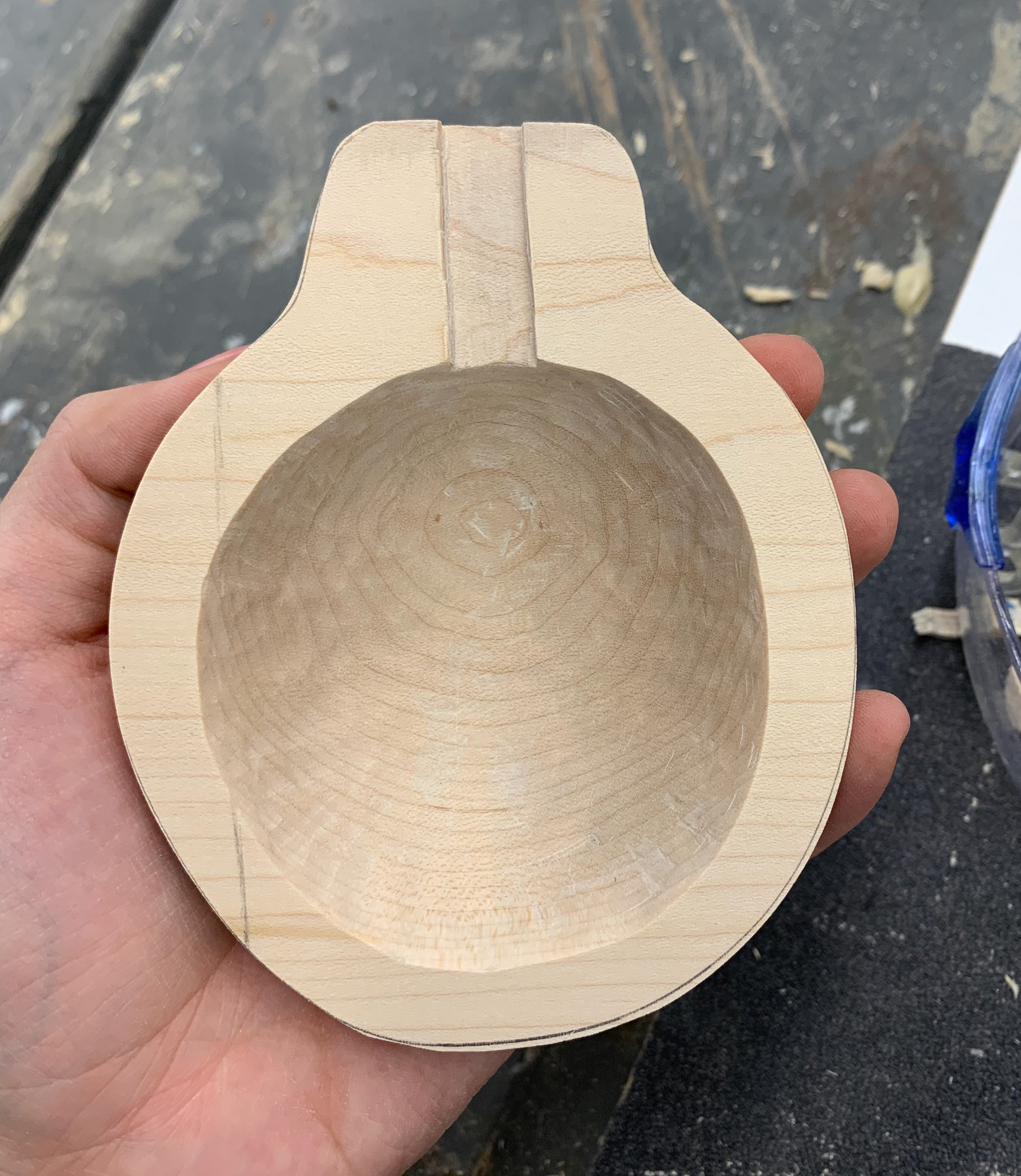
Extra Fun
Using laser cut to make bendable wood felt like a good opportunity to add some extra flair, so I added the instrument's name and a faint copyright sign (not really knowing what that meant at the time). I also decided to make a quick stand for the instrument with some leftover wood. While the bandwidth of the bendable part of the wood isn't big, the range of the notes is surprisingly big.
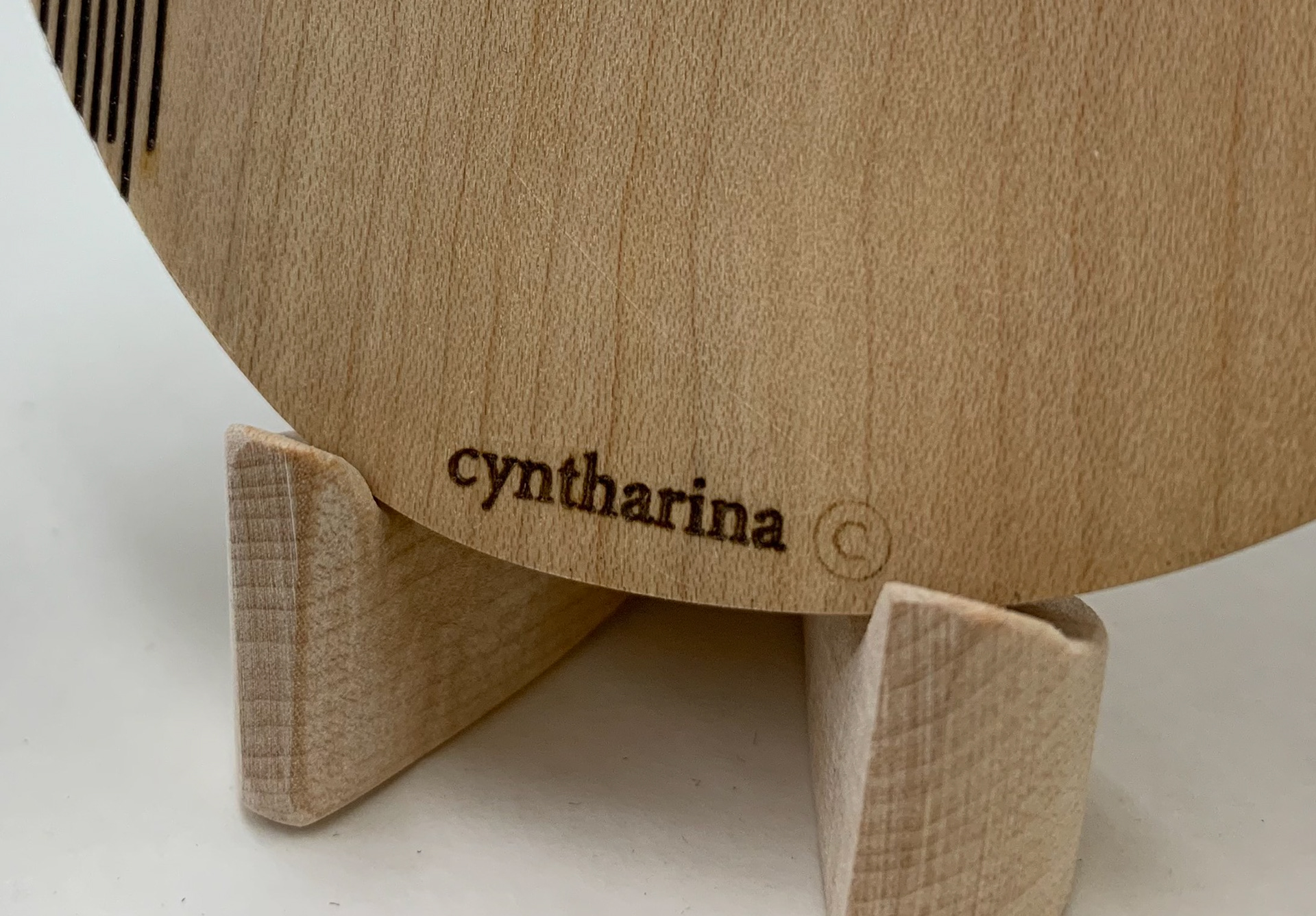
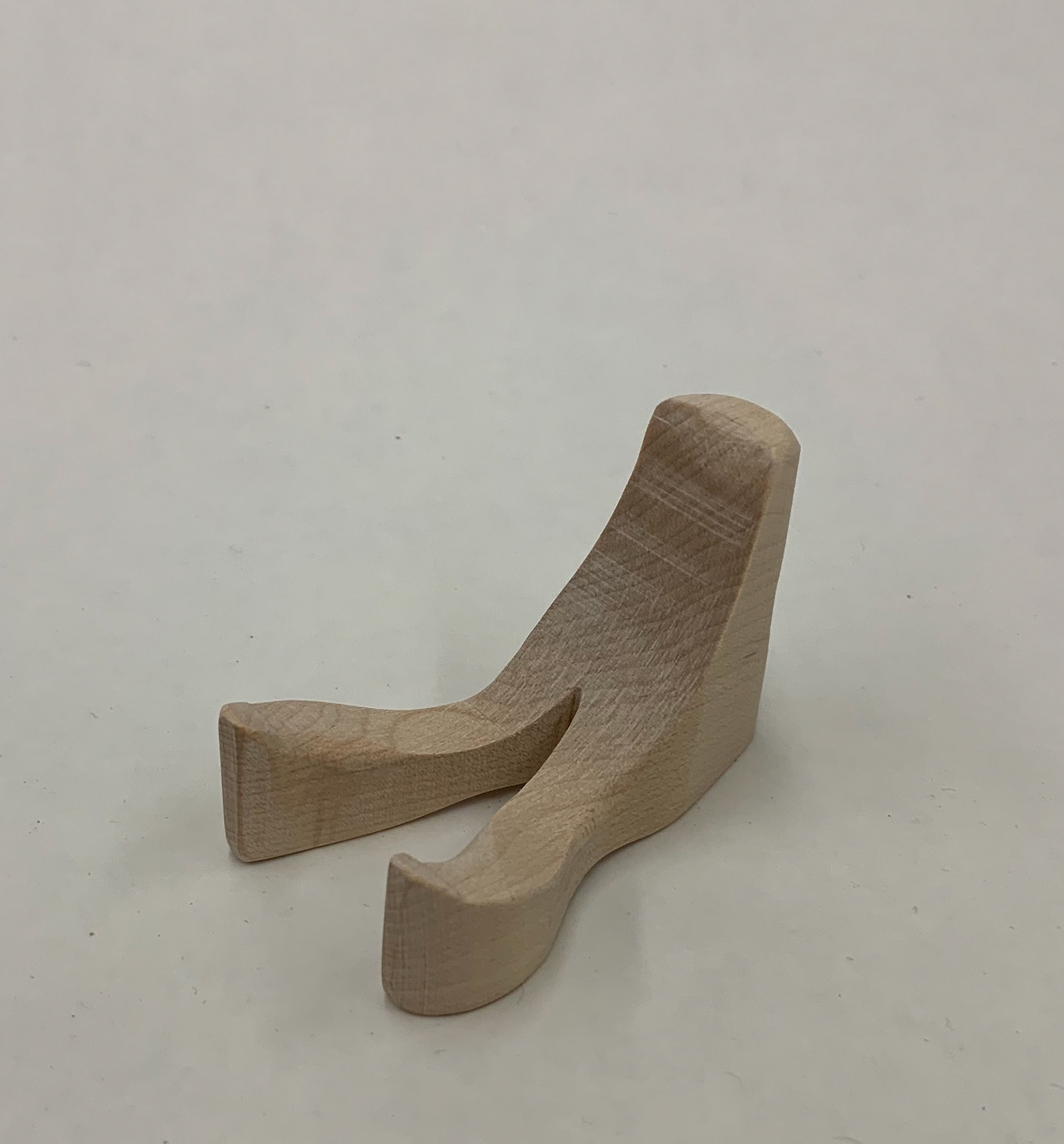
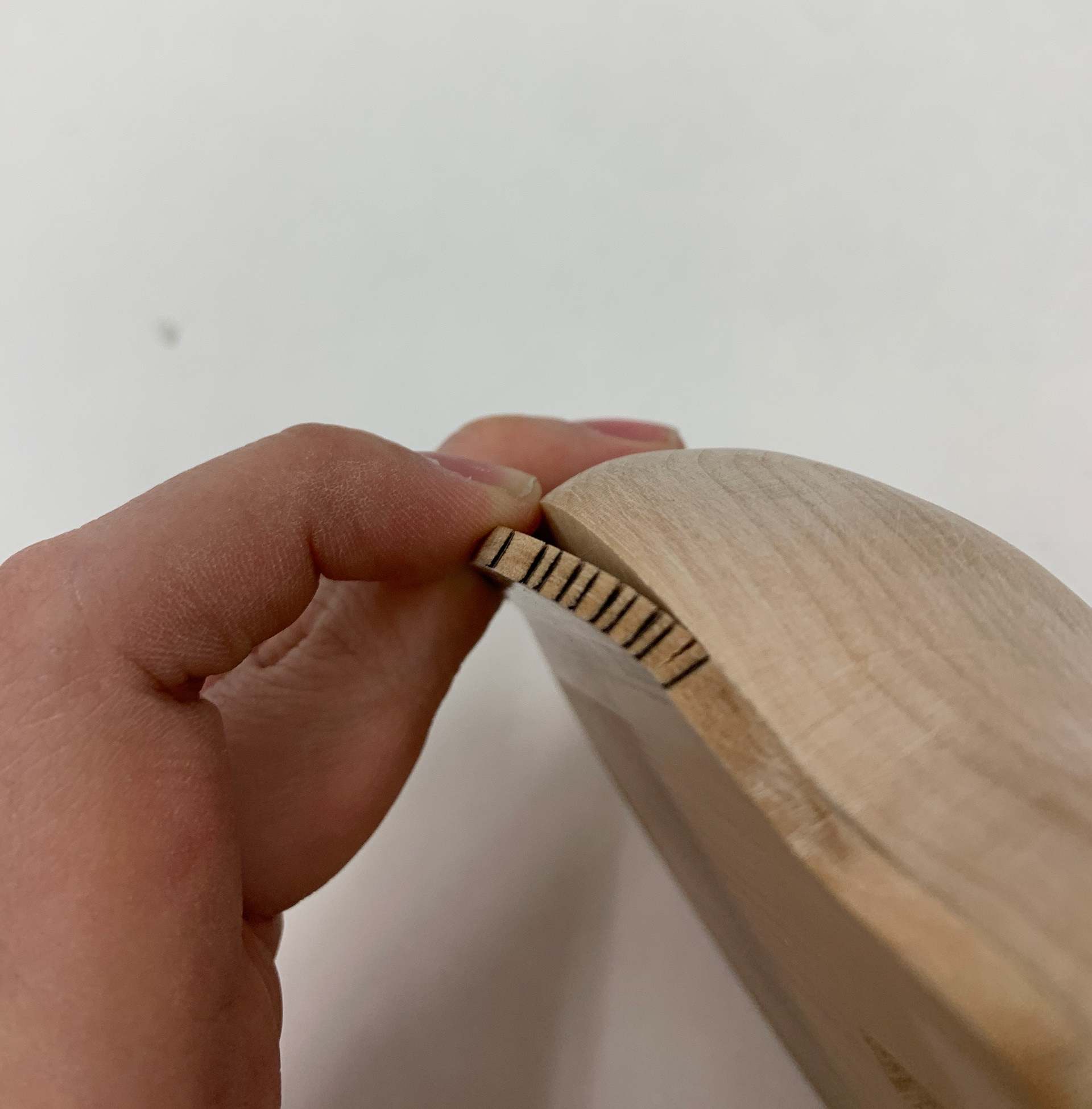
I'm grateful for this project as I learned a lot not only about woodworking but also about how I can offer things outside of the 2D sphere. I look forward to using wood as a medium more in the future and hopefully making an upgraded version of the Cyntharina as I believe there is still a lot I can build upon.
Disclaimer:
Currently, I am continuing my undergraduate studies in Providence, Rhode Island, while the instrument is in my home in Shanghai, China with my parents. I have plans to properly demonstrate how the instrument works, but until I am reunited with the object I won't be able to. If you are especially eager to see how it works, please contact me via email and I can forward you the untreated video.
This piece was chosen to be displayed at the RISD EFS 2019 Triennial.